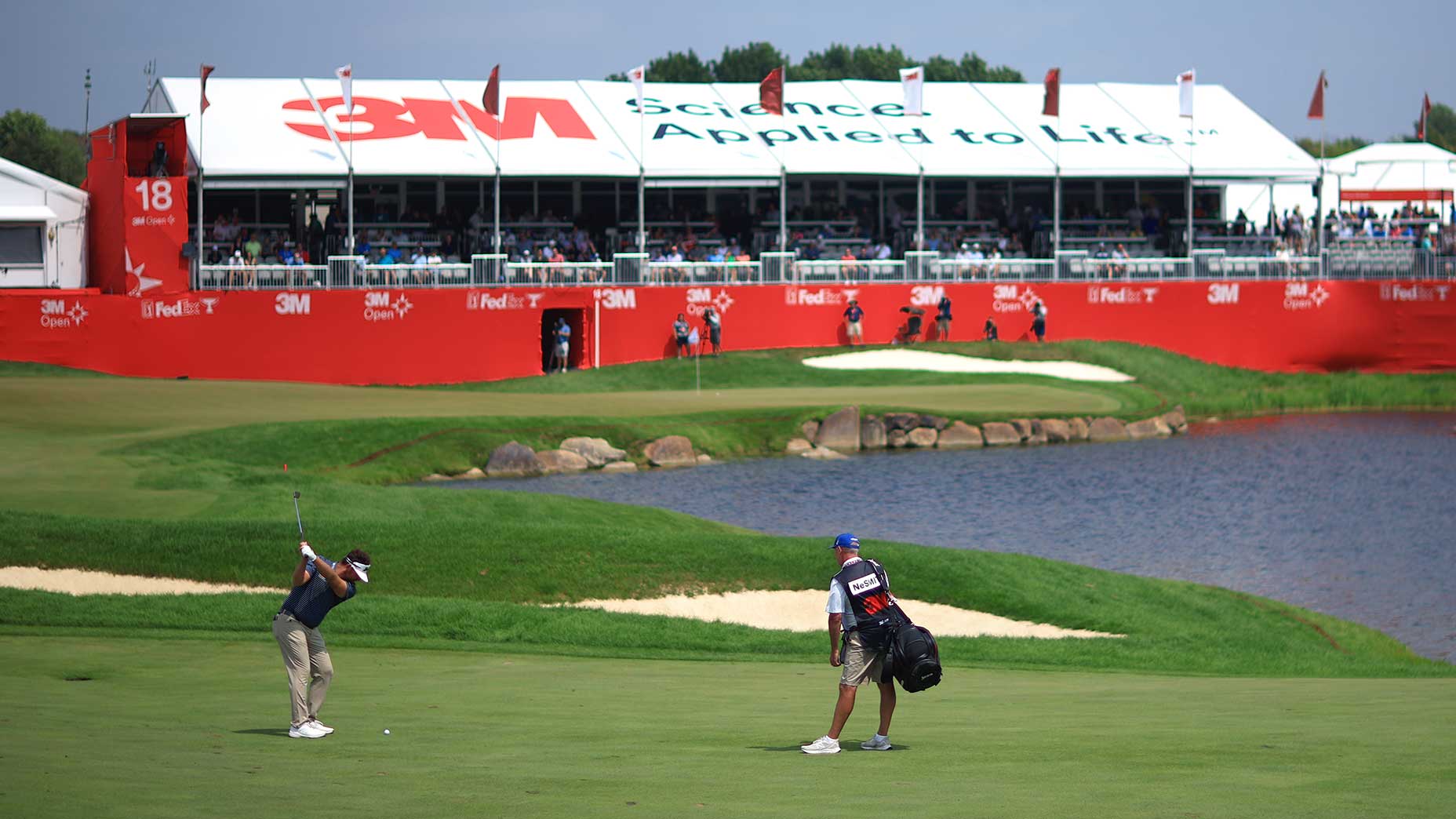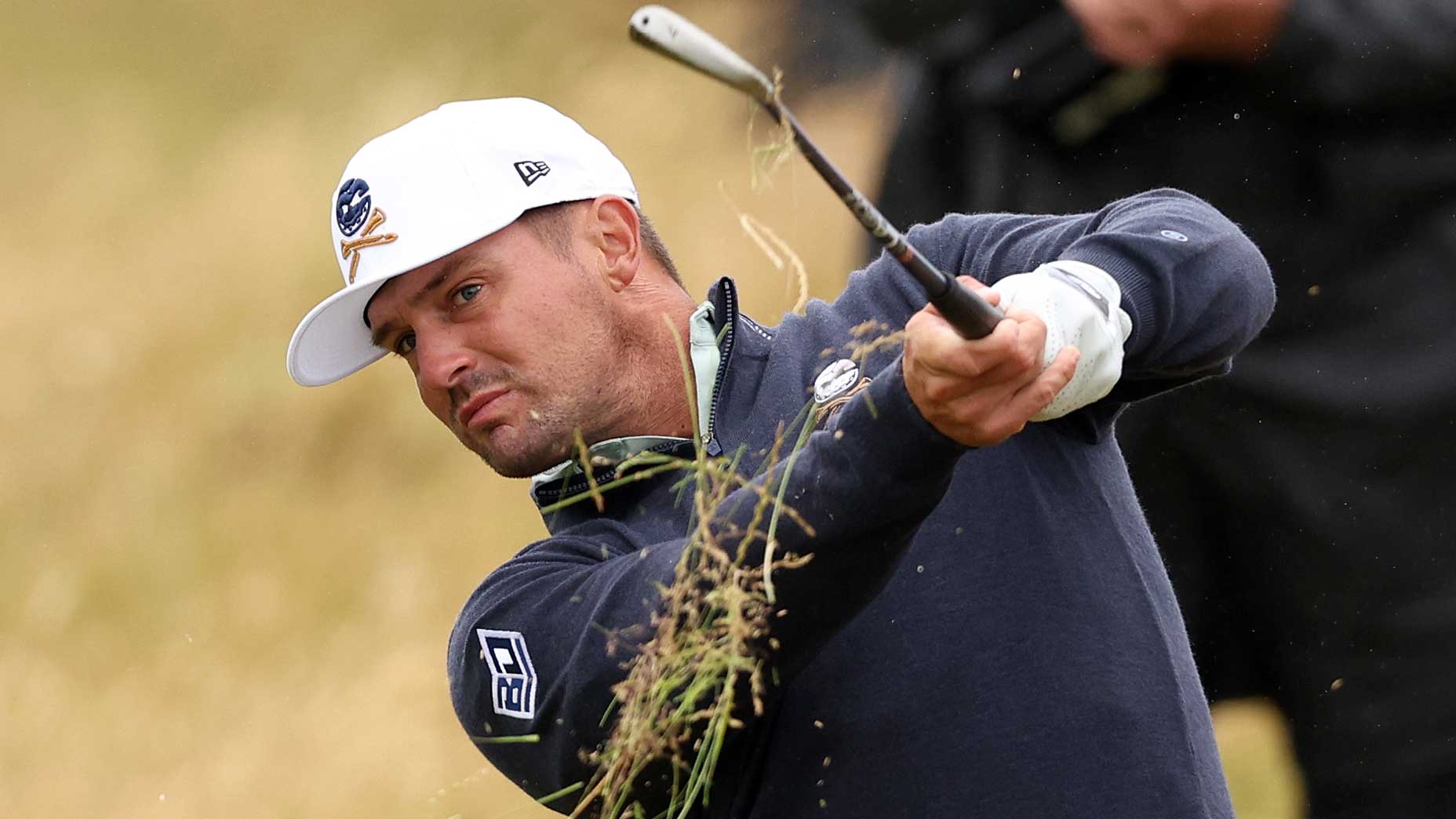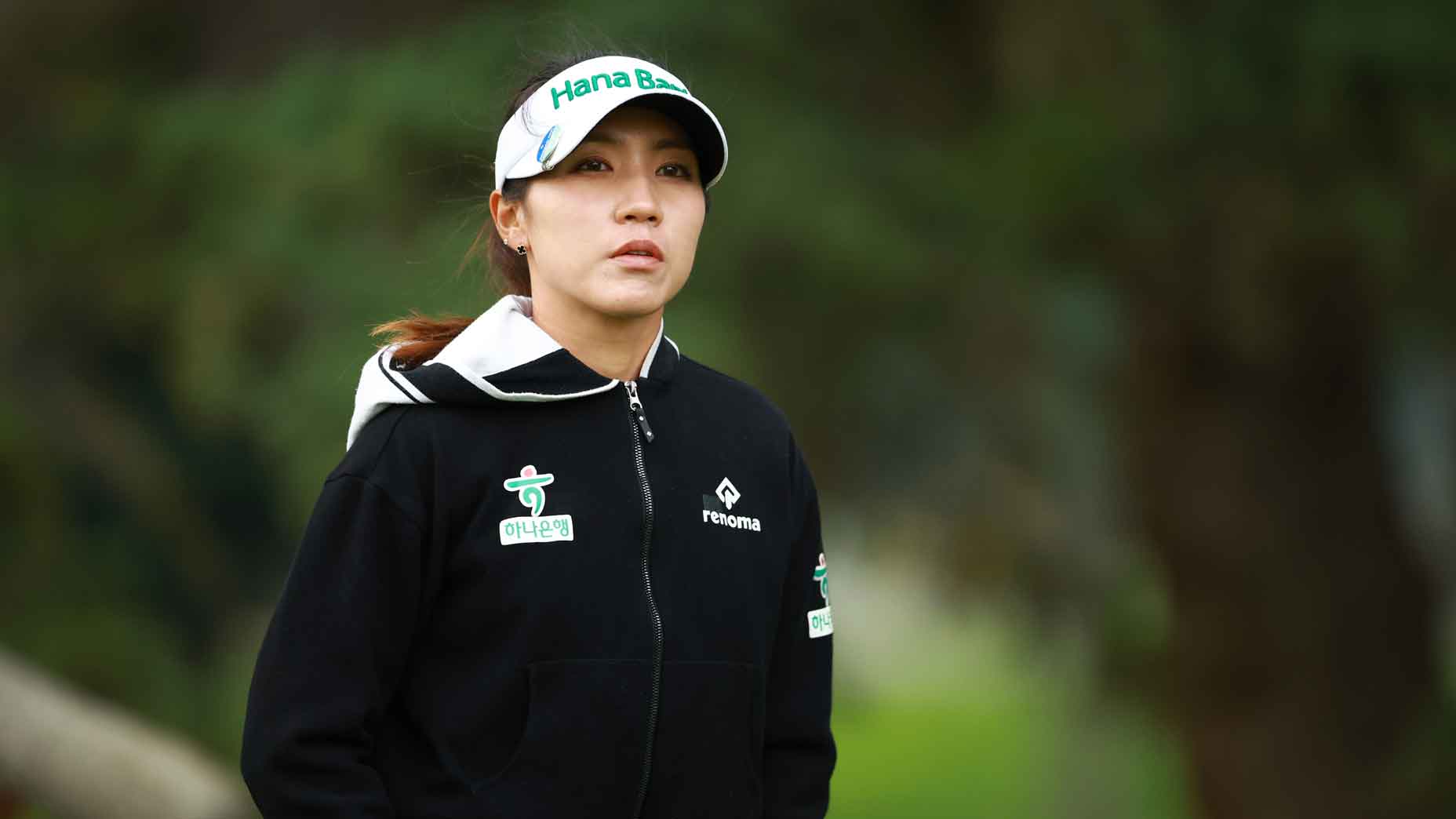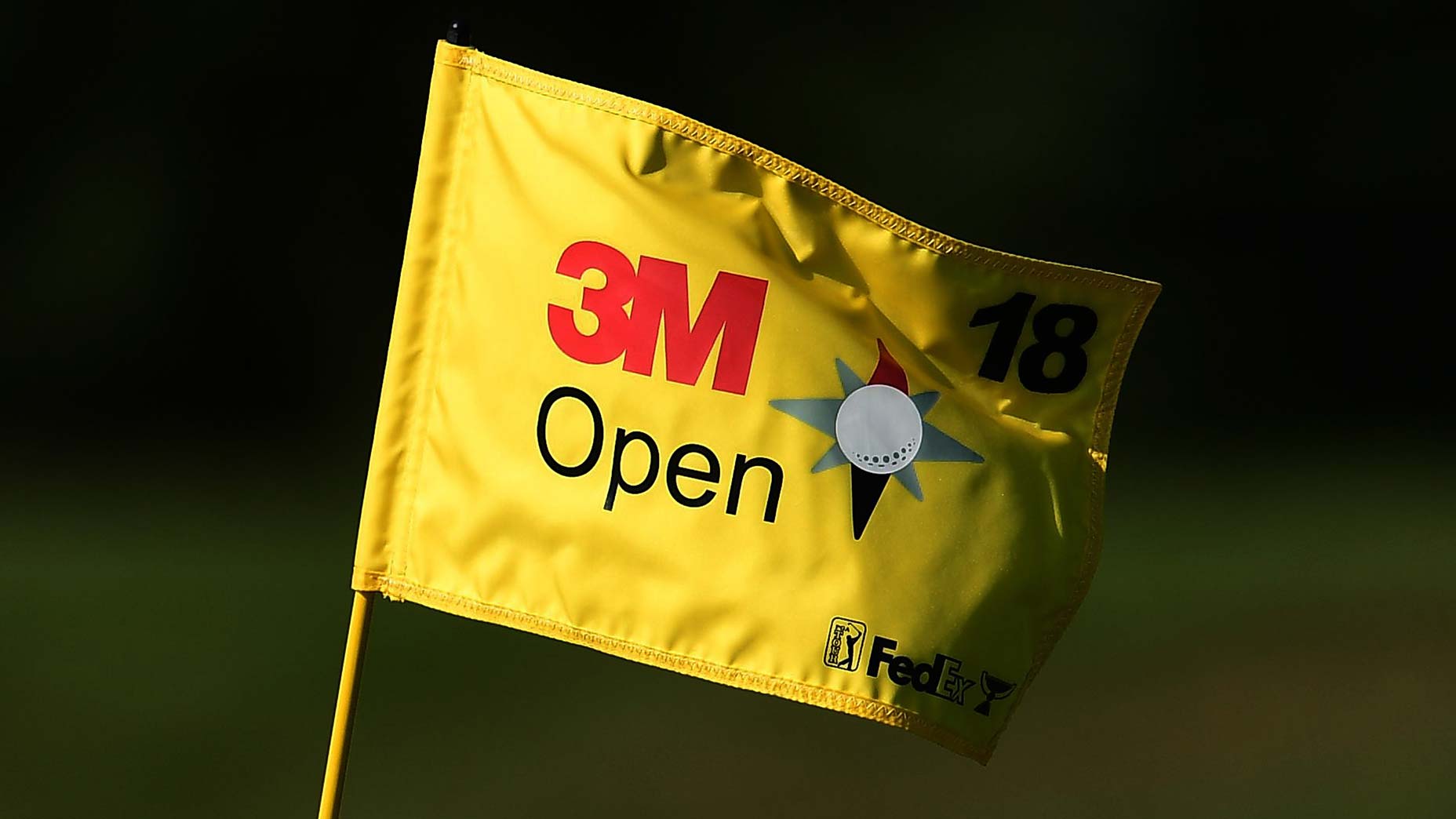Bryson DeChambeau likes to leave the pin in whenever he can. Under golf’s new rules for 2019 that will mean he can leave it in all the time.
Speaking with GOLF.com at a recent photoshoot, DeChambeau was asked about his current preference to leave in the pin, even when he’s close to the green or putting from the fringe. As ever with DeChambeau, his decision is the result of careful calculation.
“It depends on the COR, the coefficient of restitution of the flagstick,” he said. “In U.S. Opens, I’ll take it out, and every other Tour event, when it’s fiberglass, I’ll leave it in and bounce that ball against the flagstick if I need to.”

U.S. Open pins are often notably thicker than typical Tour pins, leading to more aggressive rebounding when struck. “It’s a higher propensity for it to go in the hole if it’s fiberglass compared to metal,” DeChambeau said.
That puts him at odds with his friend and sometimes playing partner Phil Mickelson, who has famously had his caddies tend the pin from 70 or more yards out.
This difference in philosophy will become far more stark beginning in 2019, when the Rules of Golf will allow players to leave the pin in from anywhere on the course, including on the green. DeChambeau was asked whether he would indeed leave the pin in when he putts.
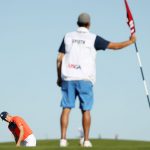
“Oh, absolutely,” he said, grinning. “The USGA’s gonna have to go back on that one. Like, ‘No! We made the hole bigger!'”
The move is on-brand for DeChambeau, who has kept an open mind in challenging traditionally accepted golf conventions including one of the basics — that clubs should be different lengths.
RELATED: Watch Bryson DeChambeau swing new Cobra driver as hard as he can
DeChambeau has some support on the pin idea, however. Years ago, Top 100 teacher Dave Pelz conducted a study for GOLF Magazine on whether leaving the pin in was the better call. Here was his conclusion: “Leave the flagstick in whenever the Rules allow, unless it is leaning so far toward you that the ball can’t fit.”
Pelz rolled thousands of balls at the hole with the pin in, out, and leaning in each direction. Here are some of his notes:
1. Perhaps most surprising, when the flagstick leans either slightly toward the golfer or away, the odds of it helping to keep the ball in the hole increase: With the flagstick leaning away from the golfer, the hole becomes effectively larger; when the flagstick leans toward the golfer, the ball rebounds downward, again helping shots find the hole.
2. Only in the most obvious case, when the flagstick is leaning so far toward the golfer that there isn’t enough room for the ball, is leaving the flagstick in a bad idea. Check the flagstick before you chip to be sure it is sitting properly in the cup. (The Rules of Golf prohibit you from positioning a flagstick to your advantage. But you may leave a tilting flagstick as is or else center it in the hole.)
3. Even if you don’t hit the flagstick dead center, it still will aid you. It proved especially advantageous when chipping downhill and at faster speeds. I even believe the flagstick should be left in when you’re putting from an inch or two off the green in the fringe. The flagstick will help you make more putts unless it is leaning severely toward you or it’s so windy that it is moving and might knock your ball away.
Bryson DeChambeau likes to leave the pin in whenever he can. Under golf’s new rules for 2019 that will mean he can leave it in all the time.
Speaking with GOLF.com at a recent photoshoot, DeChambeau was asked about his current preference to leave in the pin, even when he’s close to the green or putting from the fringe. As ever with DeChambeau, his decision is the result of careful calculation.
“It depends on the COR, the coefficient of restitution of the flagstick,” he said. “In U.S. Opens, I’ll take it out, and every other Tour event, when it’s fiberglass, I’ll leave it in and bounce that ball against the flagstick if I need to.”

U.S. Open pins are often notably thicker than typical Tour pins, leading to more aggressive rebounding when struck. “It’s a higher propensity for it to go in the hole if it’s fiberglass compared to metal,” DeChambeau said.
That puts him at odds with his friend and sometimes playing partner Phil Mickelson, who has famously had his caddies tend the pin from 70 or more yards out.
This difference in philosophy will become far more stark beginning in 2019, when the Rules of Golf will allow players to leave the pin in from anywhere on the course, including on the green. DeChambeau was asked whether he would indeed leave the pin in when he putts.
“Oh, absolutely,” he said, grinning. “The USGA’s gonna have to go back on that one. Like, ‘No! We made the hole bigger!'”
The move is on-brand for DeChambeau, who has kept an open mind in challenging traditionally accepted golf conventions including one of the basics — that clubs should be different lengths.
RELATED: Watch Bryson DeChambeau swing new Cobra driver as hard as he can
DeChambeau has some support on the pin idea, however. Years ago, Top 100 teacher Dave Pelz conducted a study for GOLF Magazine on whether leaving the pin in was the better call. Here was his conclusion: “Leave the flagstick in whenever the Rules allow, unless it is leaning so far toward you that the ball can’t fit.”
Pelz rolled thousands of balls at the hole with the pin in, out, and leaning in each direction. Here are some of his notes:
1. Perhaps most surprising, when the flagstick leans either slightly toward the golfer or away, the odds of it helping to keep the ball in the hole increase: With the flagstick leaning away from the golfer, the hole becomes effectively larger; when the flagstick leans toward the golfer, the ball rebounds downward, again helping shots find the hole.
2. Only in the most obvious case, when the flagstick is leaning so far toward the golfer that there isn’t enough room for the ball, is leaving the flagstick in a bad idea. Check the flagstick before you chip to be sure it is sitting properly in the cup. (The Rules of Golf prohibit you from positioning a flagstick to your advantage. But you may leave a tilting flagstick as is or else center it in the hole.)
3. Even if you don’t hit the flagstick dead center, it still will aid you. It proved especially advantageous when chipping downhill and at faster speeds. I even believe the flagstick should be left in when you’re putting from an inch or two off the green in the fringe. The flagstick will help you make more putts unless it is leaning severely toward you or it’s so windy that it is moving and might knock your ball away.




